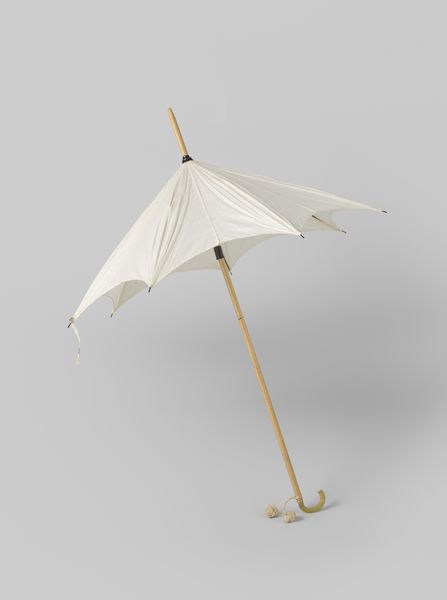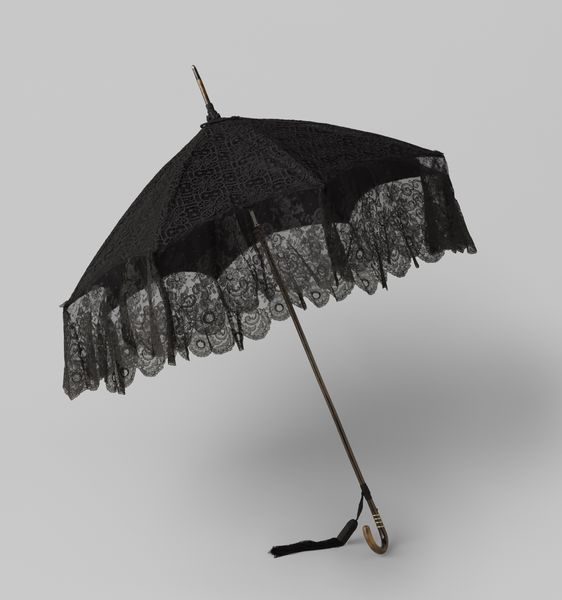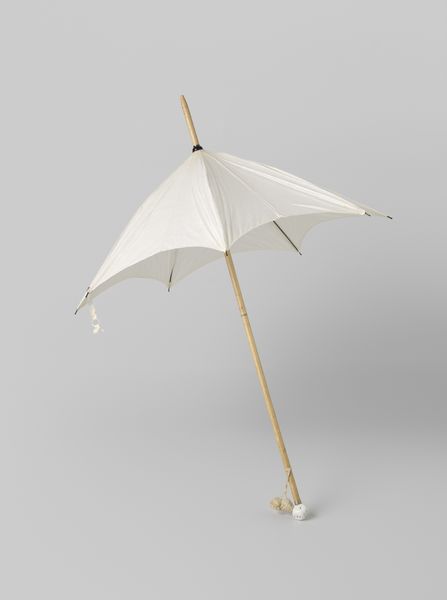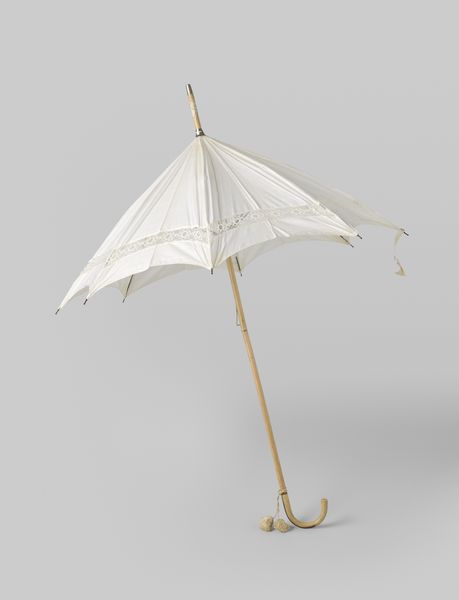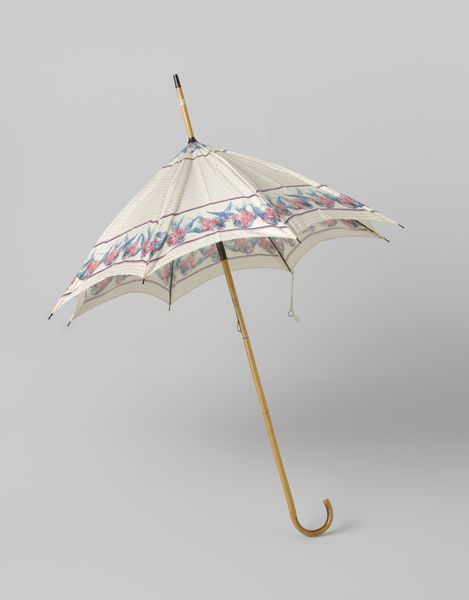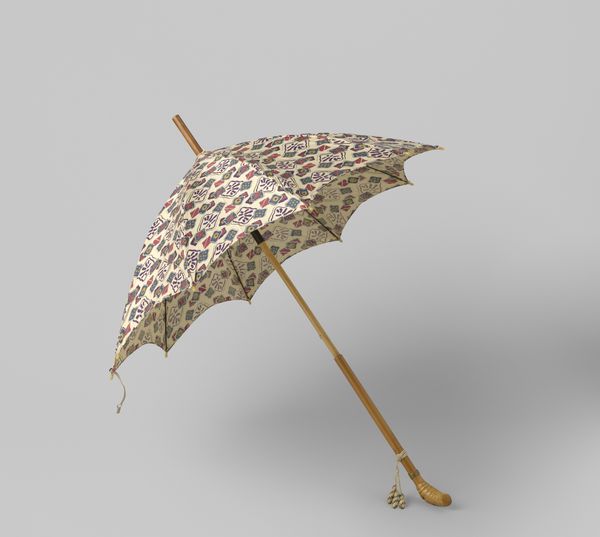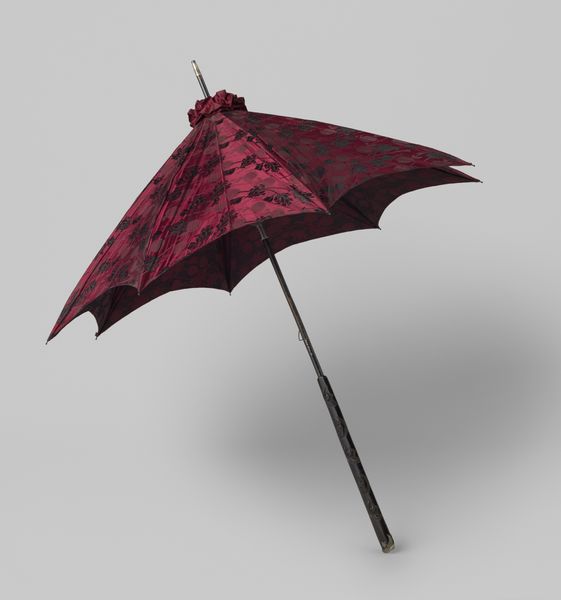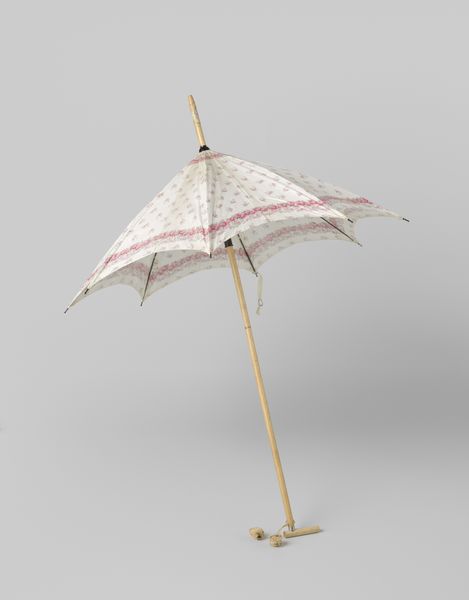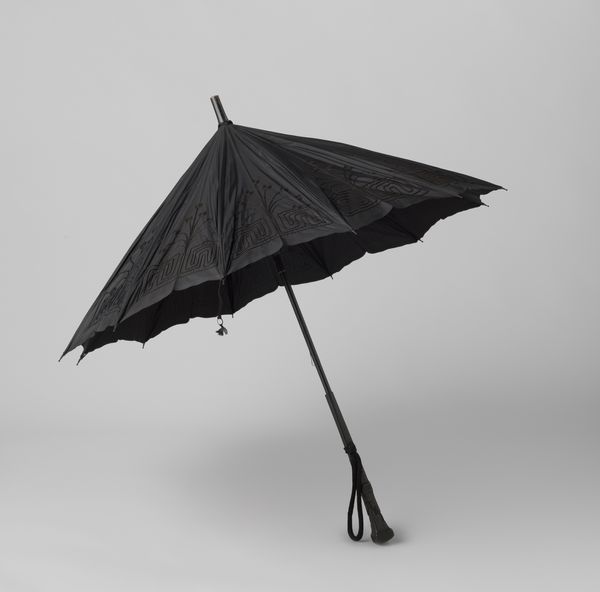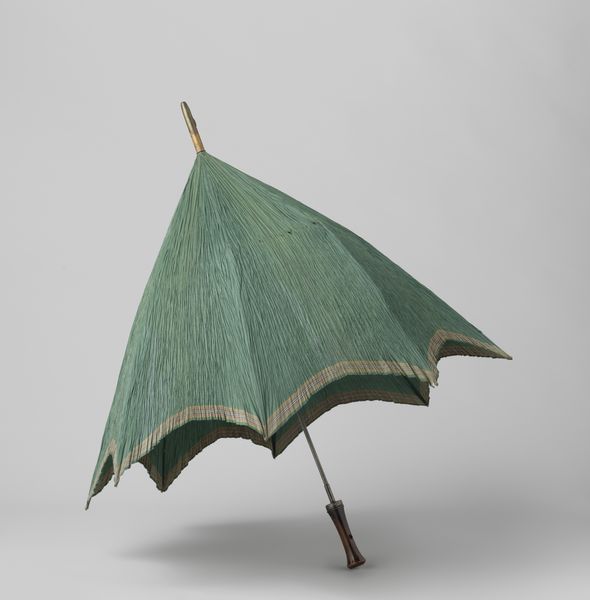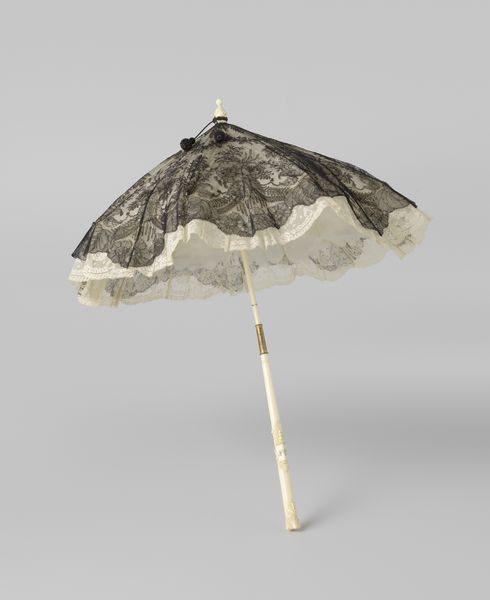
Parasol met dek van effen witte katoen met een smal meerkleurig draad langs de rand geregen, op lichte houten stok, met gebogen, ivoorkleurig handvat c. 1900 - 1910
gustavschnitzler
Rijksmuseum
photography
arts-&-crafts-movement
photography
decorative-art
Dimensions: length 93.5 cm, length 54 cm, span 86 cm, diameter 6.5 cm, width 8 cm
Copyright: Rijks Museum: Open Domain
This parasol with a plain white cotton cover, made with light wood and an ivory-colored handle, is a fascinating example of how even everyday objects can reflect social norms. Consider the social role of the parasol. Historically, in many cultures, parasols were not just functional items, but symbols of status, and even racial identity. Pale skin was particularly prized among privileged classes who could afford to avoid working outdoors. The parasol, therefore, becomes a tool for maintaining class distinctions in the culture, and even marking racial boundaries in the context of colonialism. To fully understand this parasol, we can look at fashion history, trade records, and even colonial archives. Understanding the social lives of objects offers a deeper appreciation of the values and structures of the past.
Comments
No comments
Be the first to comment and join the conversation on the ultimate creative platform.



